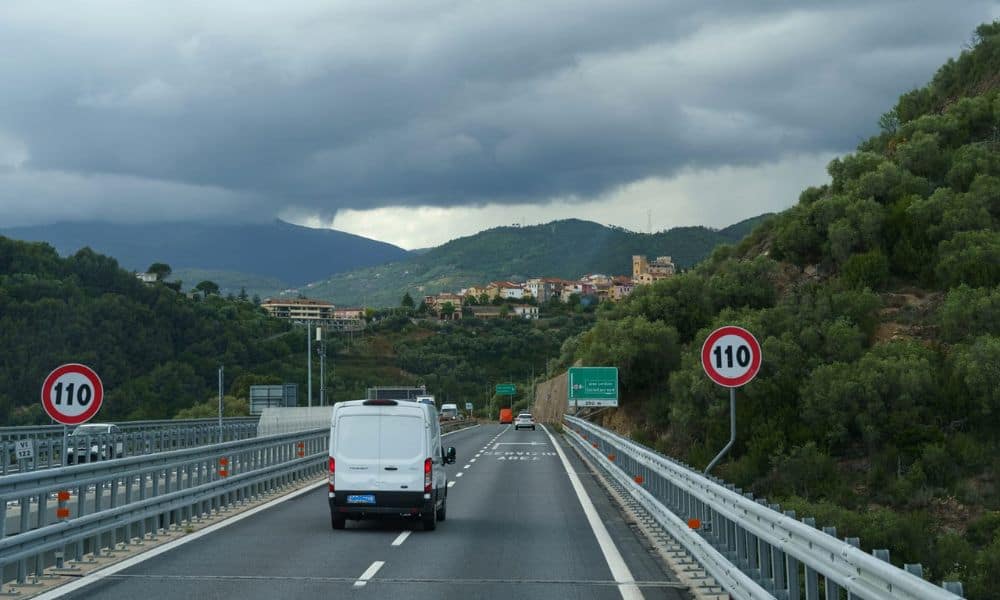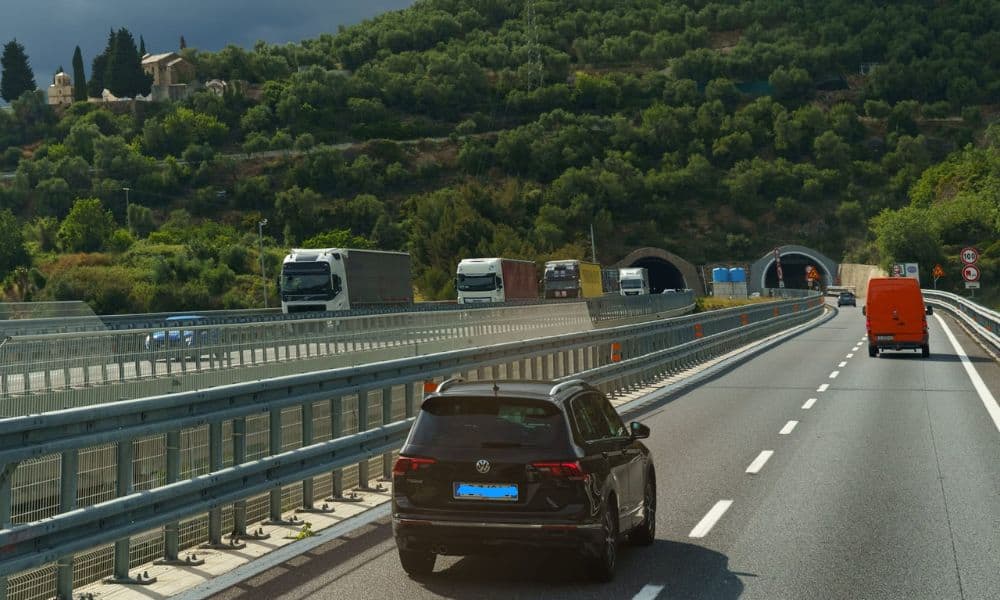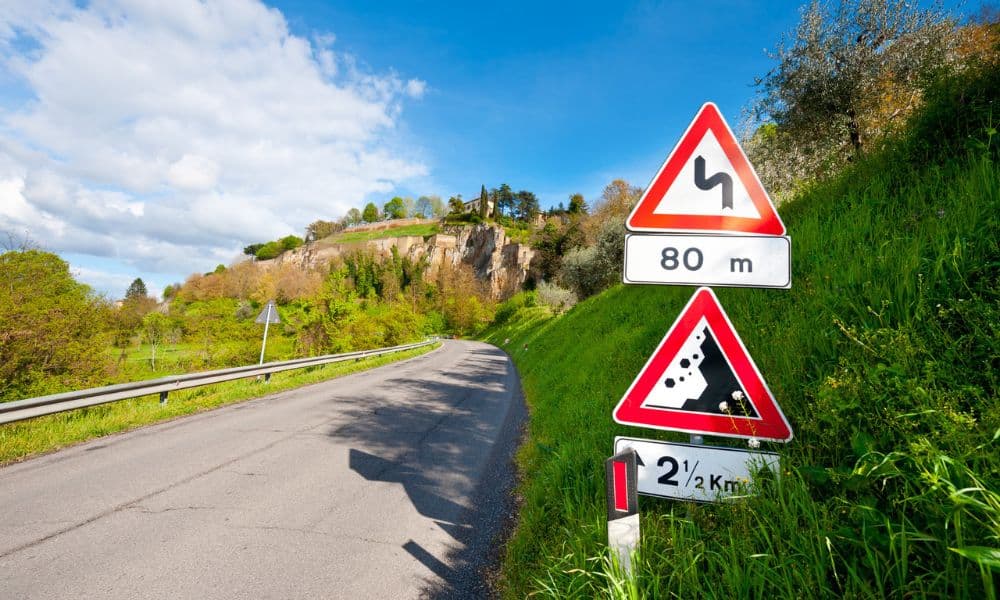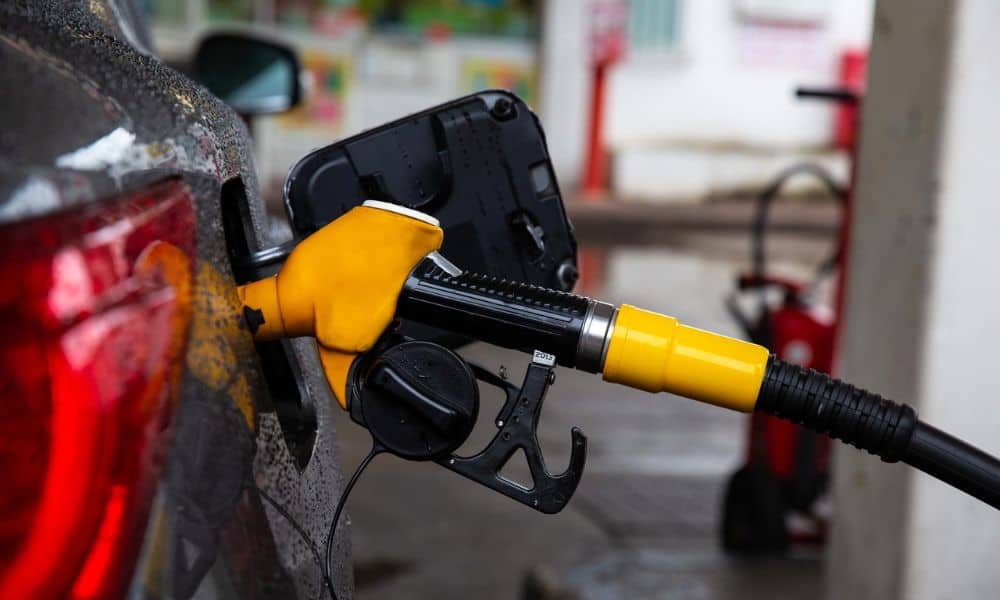Driving In Italy: Essential Tips For When You Move or Visit

by Hayley
Driving in Italy is an adventure, you can explore charming villages, countryside and historic landmarks at your own pace. But for those of us from the UK it can also be a challenge, especially in the big cities where traffic, narrow streets and parking restrictions can be overwhelming. Understanding Italy’s driving culture and rules is key to making your journey safe and enjoyable.
Whether you’re renting a car or bringing your own from the UK, being prepared is essential. From knowing what documents to carry to understanding Italian road signs, ZTL (restricted traffic) zones and speed limits, a little prep can save you time and stress. Italy’s roads are as varied as its regions so adapting to local conditions is part of the fun.
Here’s what you’ll get in this guide: practical tips for driving in Italy, from choosing the right car for narrow streets to staying legal. If you require assistance with moving your household belongings to Italy, Simpsons International Removals will help you. Now, let’s get started on what you need to know about driving in Italy below.
1. Benefits of Driving in Italy

Driving in Italy is particularly advantageous for exploring rural and countryside areas. Public transport often doesn’t reach the rolling hills of Tuscany or remote southern villages, so having a car is necessary for thorough exploration. Having your own vehicle allows you to stop at will, take scenic detours, and travel according to your own schedule. This flexibility is particularly valuable on the Amalfi Coast, where stunning views often call for frequent photo stops.
For families with children or significant luggage, driving offers more convenience than public transportation. This way, you avoid the hassle of managing bags on and off trains or buses, enjoying the comfort of your own space instead. Additionally, areas like Val d’Orcia are best explored by car due to limited public transport options.
However, driving in major Italian cities presents challenges like traffic, parking difficulties, and restricted zones (ZTL). While public transportation is often more efficient in these urban areas, having a car is advantageous for exploring beyond the city limits and venturing into the less accessible parts of Italy.
2. Choosing the Right Car for Italian Roads

Selecting the right car for Italian roads is crucial. Roads in Italy, especially in towns and rural areas, can be narrow and winding. Opting for a compact vehicle makes navigating these roads easier. Most cars in Italy have manual transmission, so specify your preference for an automatic if needed. If you prefer to drive your own car, consider these factors.
Choosing an automatic vehicle can enhance comfort and ease the transition for those used to driving automatics. This is especially important in Italy, where driving styles may differ from what you’re accustomed to. Compact cars handle better on narrow roads and simplify parking in tight spaces.
Also, consider the type of terrain you’ll be driving on. For mountainous regions or rural areas with less developed roads, a vehicle with good handling and a reliable engine is essential. Ensure your car, whether rented or your own, is well-suited to Italian driving conditions.
3. Renting a Car in Italy
A few essential documents are required to rent a car in Italy. Have a valid driver’s license, and if it’s not in Roman characters, an International Driving Permit is recommended. A credit card in the renter’s name is necessary for the security deposit; some companies may accept debit cards but with additional conditions.
Use reputable car rental companies like DiscoverCars.com to ensure a smooth experience with a car rental company. Drivers under 21 may face surcharges, and the minimum driving age in Italy is 18. Inspect the car for any pre-existing damages and document them to avoid disputes later.
A Collision Damage Waiver is mandatory, and returning the car with a full fuel tank avoids extra charges. Returning the car to a different location is typically allowed but may incur an additional fee. Having all necessary documents and understanding the rental terms helps you avoid surprises and enjoy your driving adventure in Italy.
4. Taking Your UK Car To Italy
Taking your UK car to Italy involves a few key considerations. First, you’ll need to adjust to driving on the right side of the road. Depending on your preference and logistics, you can drive your car to Italy or have it shipped.
Familiarise yourself with the differences in traffic laws and road rules between the UK and Italy. According to recent regulations, make sure your car has a ‘UK’ identifier instead of ‘GB’. Also, familiarise yourself with local driving customs and regulations to ensure a safe journey with a valid UK sticker and a valid UK licence.
5. Essential Documents and Equipment
Having the right documents and equipment is crucial when driving in Italy. Carry a full UK driving licence, proof of ID, motor insurance certificate, and the V5 registration document. Depending on your license, you might also need a valid driving licence, a valid passport, and an international driving permit.
Safety equipment such as a warning triangle and reflective jackets is legally required. Headlamp beam deflectors and a European Union driving kit ensure compliance with local laws.
Double-check all documents and equipment before starting your journey to avoid legal issues.
6. Understanding Italian Road Signs

Understanding Italian road signs is essential for safe driving. Italian road signs are colour-coded: green for highways, blue for non-toll roads, and brown for historical or tourist sites. Knowing these colours helps you navigate more effectively.
Circular signs indicate prohibitions or mandatory actions; rectangular signs provide information. Examples include the ‘Do Not Enter’ sign (red circle with a horizontal white bar) and the ‘STOP’ sign (red octagon with the word ‘STOP’). Recognising these signs and their meanings is vital for adhering to local traffic laws.
Parking signs are also significant. A blue square with a white ‘P’ indicates a parking area, often with specific parking rules. Road signs may also indicate when snow tyres or chains are required, underscoring the importance of being aware of seasonal driving conditions.
7. Speed Limits and Traffic Laws

Knowing speed limits and traffic laws is vital for safe driving in Italy. The speed limits are as follows:
- Motorways: 130 km/h
- Dual carriageways: 110 km/h
- Single carriageways: 90 km/h
- Residential areas: 50 km/h to 70 km/h
Emergency vehicles and vehicles on rails always have the right of way. Yield to vehicles already on the roundabout. Use flashing lights instead of the horn in built-up areas, and do not overtake a vehicle that has slowed for pedestrians.
Pay attention to local signage for speed limits and other regulations to avoid fines.
8. Navigating Toll Roads
Navigating Italy’s toll roads, or autostrade, is straightforward once you understand the system. These toll roads are typically privately owned and designed for efficient travel between major points. Payment methods include cash, credit cards, and the Telepass system for electronic payments without stopping.
Take a ticket when entering a toll road unless you have a Telepass. At toll booths, blue lanes are for credit card payments, and white lanes are for cash. Keep your toll ticket handy and away from your mobile phone to prevent demagnetisation. If your credit card doesn’t work at the toll machine, press the aiuto (help) button for assistance.
9. Parking in Italy
Parking in Italy, especially in major cities, can be challenging. Parking spaces marked with blue lines typically require payment; white lines indicate free parking and yellow lines are reserved for specific uses. In cities like Rome, parking is prohibited in certain areas during working hours without a resident’s permit.
Parking fines range from €40 (£33) to over €300 (£248), and illegally parked vehicles may be towed. To avoid fines, check parking costs and times on signs and payment columns. Keeping coins handy for parking meters and purchasing a parking disc from local stores can also be useful.
10. ZTL Zones and Restrictions
ZTL zones, or ‘Zona a Traffico Limitato’, are inner-city restricted areas designed to reduce congestion and pollution. These zones are identified by a red circle with a white background sign indicating no vehicles are allowed. A flashing ‘ZTL Attiva’ sign indicates that restrictions are currently active.
Entering a ZTL without proper authorization can result in fines that vary by city. Tourists should be cautious as cameras monitor these zones and automatically register license plates.
Some cities offer temporary permits for visitors to enter ZTL zones, so check if this option is available.
11. Drink-Driving Regulations
Italy enforces strict drink-driving regulations to ensure road safety. The general blood alcohol concentration limit is 0.5 grams per litre; professional drivers, new drivers, and those under 21 must maintain a 0.0 limit.
Exceeding these limits can result in fines, license suspensions, and imprisonment. Refusing a breathalyser or blood test is also a serious offense. To avoid violations, it’s best to abstain from drinking and driving, especially since certain groups face stricter laws.
12. Using Technology for Navigation
Technology can make navigation in Italy much easier. Google Maps is the most reliable navigation app for driving in Italy, providing accurate directions and real-time traffic updates.
While a navigation app is highly useful, carrying a paper map as a backup is advisable in case technology fails. Combining both digital and traditional navigation methods ensures you’re always prepared, no matter where your journey takes you.
13. Fueling Your Car

Fueling your car in Italy is straightforward once you know what to look for. Similarly to the UK, petrol is commonly labelled with green nozzles, while diesel is marked with black, blue, or yellow nozzles. Leaded petrol is not available; there are only unleaded options like petrol and diesel.
Petrol station payment methods include credit cards, with Visa being widely accepted, although cash is also popular. Be mindful not to mix up the nozzles, as diesel nozzles are larger to prevent misfueling. If you accidentally fill a petrol car with diesel, the car will stop working, and the tank will need to be drained.
14. Handling Car Trouble and Accidents
Handling car trouble and accidents in Italy involves knowing the right steps to take. For minor accidents with material damage, it’s not mandatory to call the police, but using an international accident report form can assist in communication.
If injuries are serious, call an ambulance or take the injured to the nearest hospital. For breakdowns, contact your insurance for roadside assistance or use the Italian Automobile Club at 800116800. Emergency assistance can also be requested from red SOS columns along motorways.
15. Understanding Italian Driving Culture
Driving in Italian cities can be overwhelming due to heavy traffic and aggressive drivers. Many Italian motorists view indicating as optional, and parking habits can be quite haphazard, often disregarding designated spaces. Merging at intersections can be chaotic, especially with multiple lanes converging, and drivers might not come to a complete stop at stop lines, often edging into the road.
Confidence and assertiveness are crucial when driving in Italy to navigate effectively, and understanding these local driving habits can help you stay safe.
16. Child Seats and Safety Regulations
When driving with children in Italy, adhering to child seat regulations is crucial. Child seats must meet EU standards and are required for children under 12 years of age or less than 1.5 meters tall. Infants should be seated rear-facing until they reach at least 10 kg (24 lbs), and children under 18 kg (48.5 lbs) must use child car seats.
For children over 18 kg, booster seats are required until they can safely use the vehicle’s seat belt. Ensuring that your child’s seat is correctly installed and that it meets the required standards will keep your young passengers safe and compliant with Italian traffic laws.
17. Preparing for Winter Driving

Preparing for winter driving in Italy involves making sure your vehicle is equipped for harsh conditions. Between November and April, snow chains or winter tyres are required in certain areas. Not complying with these requirements can result in fines ranging from €80 (£66.27) to €318 (£263.41).
When using snow chains, the maximum speed limit is 50 km/h (31 mph). In icy conditions, snow chains can significantly improve vehicle traction and safety. Always carry snow chains if you plan to travel in mountainous regions during winter months to ensure you are prepared for sudden weather changes.
Italy offers some of the world’s most scenic routes and road trips, perfect for those wanting to explore the country by car. The Amalfi Coast drive, stretching about 75 km, provides stunning coastal views and challenging turns, starting from Salerno and ending at Sorrento. Similarly, a road trip from Florence to Orvieto over two to three days showcases the art, architecture, and vineyards of Tuscany.
For a leisurely day trip, driving along the southern shore of Lake Como offers picturesque views of lakeside villas and gardens. The Great Dolomites Road, linking Bolzano to Cortina d’Ampezzo, is renowned for its breathtaking mountain scenery and outdoor activities. From Rome to Sulmona, you can experience the unspoiled landscapes of Abruzzo with its empty valleys and mountain vistas.
One more route worth noting is the southeastern Sicily road trip from Catania to Ragusa, where travellers can discover UNESCO-listed baroque architecture and charming towns. These scenic drives highlight Italy’s diverse landscapes and cultural richness, making them a must for any road trip enthusiast.
Are you looking to relocate to Italy?
Driving in Italy is the perfect way to see the country’s landscapes, history and culture at your own pace. Whether you’re driving through idyllic countryside villages or navigating city streets, having your own car makes your Italian adventure more flexible and fun. But understanding local traffic laws, road signs and driving etiquette is key to a safe and stress free experience.
If you’re shipping to Italy, we can make it seamless. We offer a full door to door service, including professional packing, customs clearance and delivery to your new home. Whether you’re moving a few items or a whole household, we have a solution for you. Simpsons International Removals will take care of everything so you can focus on settling into your new life in Italy.
Go! Quote now or visit our Moving to Italy Guide. Buon viaggio!
Recommended Posts

Moving to Italy Checklist – Your Essential Guide
Thursday, 8th August 2024

The Top Benefits of Moving to Italy
Thursday, 9th May 2024

Finding the Best Place to Live in Italy for UK Expats
Thursday, 8th February 2024


